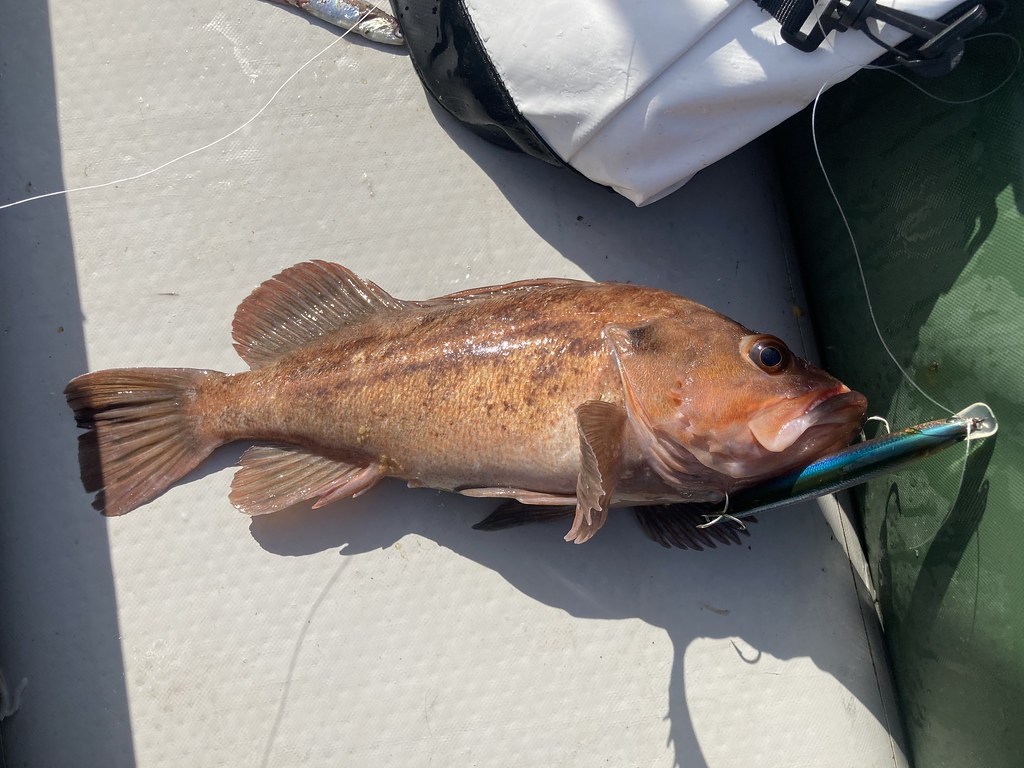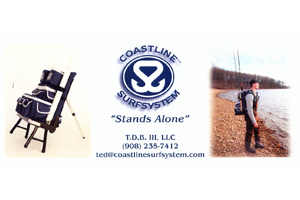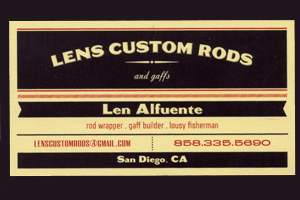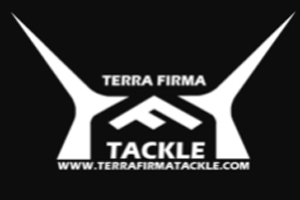Donít Be An Airhead:
Effectively Outfishing The Fleet From An InflatableIíve got to admit, I feel like a kook sometimes. And sometimes people might agree. But with a couple years under my belt, coming back to the dock with my limit, quietly putting my boat on a kayak dolly, and trucking it away while I hear others scratching their heads about the dayís fishing has been quite the underdog high.

I didnít have a place to store a boat, a car to tow it, or the money to blow on it. But I knew I was hungry to fish past the shoreline. The kayak fishing game just wasnít for me. Not enough storage, not enough range, no desire to make garage sales out of beach launches, and not enough sea-legs to handle being that low to the water. I am happy for those find immense success and enjoyment in the kayak fishing game, but it was much too limiting for me.
After much research, I realized for the price of a peddle kayak, I could probably at least get a small soft bottomed inflatable, a small outboard, and fish the same zones, and maybe a little more. So I found a boat online and had it shipped. I chose the Saturn SK470XL, a 15í x 4í ďkaboatĒ with a soft bottom and inflatable floor. I originally made the purchase while Saturn was based in south Florida, and it has since been bought out and moved to the Northwest, presumably for the drift fishing market in the rivers up there.
Talk about a home run of a boat.
 The Mosquito's maiden voyage.
The Mosquito's maiden voyage.What began as a vessel chosen for coastal and freshwater trips has turned out to be the dark horse of the SoCal mosquito fleet.
So let me make a case for inflatable fishing in SoCal.
 Let's get pumped up!
Let's get pumped up!Iím very careful about condoning an inflatable boat for saltwater fishing. The concerns are obvious: lots of scary pointy sea monsters that can end your day at seemingly any moment. And for every scary pointy sea monster there is underwater, there are at least as many pointy tools in the boat required for the dayís fishing.
There are certainly risks involved with the inflatable, on top of the built in risks of using small craft. However, at the end of the day, being a little careful with hooks and gaffs and fish teeth and spines is the main difference. My Saturn SK470XL is built with 4 air chambers, not including the separate inflatable floor board. On top of the sturdy PVC construction, the divvied up air chambers buy plenty of time for safe reactions to the rare situation of serious air leaks.
This is where I remind you to have safe practices while boating. Have the required coast guard of:
- life jackets for each person on board
- visual distress signals (flare or floating electronic beacon)
- sound producing device (whistle or horn)
- lights for use at night
Know how to use that equipment as well. As a boater, subscribe to TowBoatUS to make emergency situations significantly more manageable and more affordable. Have a fully charged handheld VHF radio on board. It is STRONGLY recommended to have a personal locator beacon on board, especially when leaving cell phone range.
Other gear youíll want:
- electric air pump
- hand pump to top it off
- kill bag: 24 can cooler from Calcutta is perfect for inshore. Easily fit a 20 fish limit of rockfish, bass, whitefish, legal halibut on the smaller side, etc. A 40Ēx16Ē is nice to have for bigger game, or the kayak kill bag style that nestles on the bow.
- anchor: a bruce anchor will be the lightest, most efficient anchor, so it will come in clutch when youíre saving space in this setup. I have a small anchor bag which contains 150í of rope plus 10í of chain. Itís not much for anchor fishing in saltwater but itís enough to stay safely off the beach in emergencies.
- fillet board: I have a 36Ē board that stretches across the pontoons which can be a nice work station
- super glue: works well for plugging pin holes; PVC fabric for larger holes is generally provided in a factory boat purchase
- analog compass
- fish finder
- carabiners
- bungee cord
- appropriate screwdrivers and wrenches for for all fasteners on board
And PVC/ABS pipe comes in real handy with DIY projects!
 Bench seat replaced with a PVC seat foundation and swivel chair. Outboard:
Bench seat replaced with a PVC seat foundation and swivel chair. Outboard:
I use a 4hp Yamaha 4 stroke outboard. I found it on Craigslist for $700. Before, I had a 6hp Mercury. I like the 4-6hp range because itís about 65lbs, which is as heavy as I want to handle, as I have to lift the outboard on a very regular basis. I rest the outboard on the tiller side in the trunk of my car while in transit, and it goes on an outboard cart in storage. When Iím back at the ramp from a dayís fishing, I take the outboard off the transom while the boat is tied to the dock. I sit on the dock, lock my arms, use shoulders/pectoral muscles, lift the outboard and rotate it onto the dock. This maneuver is the reason I havenít gone up to an 8hp or 9.8hp, which is going to be 90-100lbs. But, dragging the boat by hand onto the ramp and onto the dolly is even more difficult and time consuming, so I opt for this procedure.
 4hp yammy chugging along with two men on board.
4hp yammy chugging along with two men on board.Iím about 195lbs, all the gear including the outboard is probably 120lbs, and the hull itself is 100lbs. So in total, the outboard is pushing 400lbs. A 4hp outboard is getting me 9-12mph. 6hp will get me 10-15mph. Chris drives a similar setup and might have another 50lbs on board, and he uses 9.8hp to get 15-18mph. Planing speed is around 8mph.
Hereís the best part: fuel economy! With these outboards, youíre looking at 15, 20, sometimes 30mpg depending on what youíre doing for the day. With the 6hp, I had days cruising offshore for pelagics where I went 50-60 miles and didnít burn half of my 6 gallon tank. I really like this part of the boat setup as an introductory experience to boating. The way I see it, Iím putting the miles in now for cheap, and learning my fishing areas without having to burn too much gas and money in doing so. That way, when I do end up with a boat that gets the standard 2mpg, I wonít waste as much time and money making mistakes and not getting bit.
 6 gallon tank more than halfway full after a 50 mile trip.
6 gallon tank more than halfway full after a 50 mile trip.Fishing-wise, here is almost nothing you canít do from the inflatable. I would say you can do it all except target pointy things, but Chris has since debunked that with multiple makos landed, and a sword to boot. Itís all a matter of knowing your own limits. Be careful. You hear me? Be careful out there, son!
 Scouting an offshore kelp patty with Chris.
Scouting an offshore kelp patty with Chris.At this point, Iíve boiled my trips with the Mosquito down to saltwater trips, with a 25 mile range from my home port. 25 miles sounds like far too much for most peopleís standards, and thatís understandable. I have been out to the 209 from Dana Point, and just short of the Avalon Knoll from Huntington Harbor. If your outboard is well maintained and you have the proper safety gear, the real issue of range becomes how much your lower back can take. Sure, with the fuel economy I get, I could do a loop around Catalina and get home, but by the time I get back to the ramp Iíd need harbor patrol to scoop me and my threadbare vertebrae out from the bottom of the boat.
Some people think the narrow beam of the kaboats would make it more prone to flipping, but I have never felt close to flipping. I believe the flat bottom stitch style of the hull makes the boat cling to the surface tension of the water. If youíve ever tried to lift a pool cover off of water, youíd understand the effect. Iíve been in 2-4í tight wind swell in the afternoons a number of times. Itís hairy, but the boat can handle it. The real issue becomes being patient with quartering in the following seas. And as with any boat, when in doubt, take your time. Pushing your way through gnarly chop can take a serious toll on gear, with lures swinging, items bouncing around, and reels coming loose on deckhand rods.
 Get back to the ramp before heavy afternoon winds make for a rough ride that can take a toll on your gear.
Get back to the ramp before heavy afternoon winds make for a rough ride that can take a toll on your gear.Inshore fishing in the Mosquito was the main goal in the purchase, and it excels in the application. Riding out a few miles from the dock, drifting over some stones, slamming some bass, and heading back on less than a gallon of gas is a delightful day. I donít like using the anchor much, because there is little room for a winch (or a trolling motor), so retrieving 100í+ of anchor rope gets messy real quick. Iíve learned to drift fish where I can, and even troll in unusual circumstances. Using a 3 way rig on a 30# outfit, Iíll get my preferred lure down with 12oz of weight in up to 100í of water, and idling 1.5-2.5mph I can do well racking up numbers of bass. Drift fishing with dropper loops is also as effective as on any other vessel.
 Brown rockfish caught while slow trolling over stones.
Brown rockfish caught while slow trolling over stones.Offshore trolling is a place where the Mosquito surprisingly shines bright, and success has been wildly gratifying. Once you figure out a way to have good strong rod holders, the inflatable is highly fuel efficient at trolling speeds and has room to drag 3 lines, or more if you get extra creative. Currently, I have a PVC bench seat with rod holders built in at such angles as so they wonít tear away on a ferocious lure strike. In the most minimalistic setup with just the standard aluminum bench seat, you can tuck a trolling rod under your leg as you work your zone. Iíve had a couple run ins with tuna from the Mosquito. The first was a breezer of 100-150lbers that I mistook for dolphins from afar. I hooked one in the 100lb class and got it to color before the treble straightened out. Once the initial adrenaline of seeing my first big tuna in person ever (and all by my lonesome on a tiny boat, nonetheless) wore off, I realized that it was totally feasible to land that tuna, had the hook not straightened outÖlessons for another time!
 Bent out hook from a big game run-in.
Bent out hook from a big game run-in.Carrying live bait is a possibility depending on how you want to manage your space and setup time. I never have a bait tank on board, but I see several ways that it could be done. Personally, I already have too much to set up and take down with every trip so I don't use live bait and instead key in on my artificial/dead bait presentations.
Iíve omitted freshwater up to this point. I originally wanted to use the Mosquito on local lakes more often. I was able to use it on Piru several times, Clear Lake, and Cachuma once. But it was Cachuma where I decided I couldnít do it anymore. With current quagga mussel regulations, itís expected that your boat is inspected for mussels and must be bone dry to prevent the risk of spreading the mussels into clean lakes. At Cachuma, I had to remove the rolled-up boat from my roof, unravel it, and have the ranger at the kiosk check for moisture. They then had me roll it back up, take it to a shack a few hundred yards away, take it back off the car, unravel it, pressure spray the boat, ravel it back up, then take it another hundred yards to the launch ramp, where I would set the boat up. By the time I had the boat in the water I was beat to hell and hardly motivated to fish.
The best way forward to fish those lakes would be to have the admissions kiosk check and approve of the vessel, then inflate the boat right there and prepare accordingly for short journeys around the lake for further quagga procedure before the launch.
Also note that rolling up the boat tends to trap a little water as well, so passing quagga inspection might prove dicey.
Taking an extra passenger on a 15' model is not out of the question, but make sure your passenger has low expectations for their overall comfort while aboard. Fitting two fishermen plus gear for an inshore trip is just fine, but there isn't enough room to also secure a trophy catch.
 Dad up on the bow, braving a lack of creature comforts so that he can watch his son outfish him.In shortÖ
Dad up on the bow, braving a lack of creature comforts so that he can watch his son outfish him.In shortÖIíve logged about 70 trips in the boat up to this point, and Mosquito is still holding together well. It is a well constructed boat. There have been a few tiny air leaks in the stitching and some pin hole leaks from spines and hooks along the way, but Iíve yet to feel endangered for lack of construction quality or general seaworthiness.
If you have any questions about using kaboats, please feel free to contact me. If Iím inspiring people to move forward with this highly accessible boat option, I want to also make sure that said people are making informed decisions and donít get in over their heads. Have fun, and be safe!






